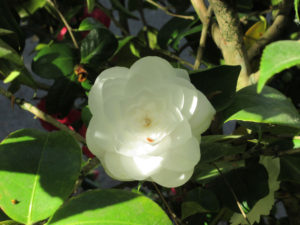
Click Refresh to view slides

Click Refresh to view slides
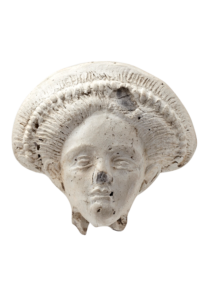
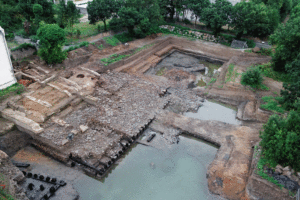
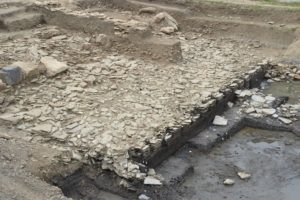
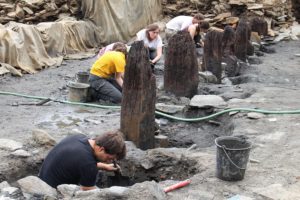
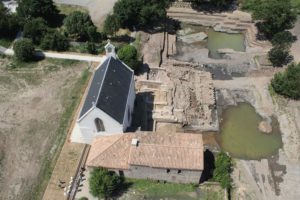
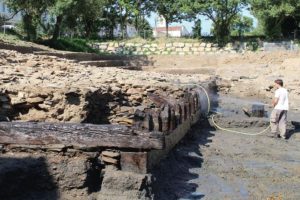
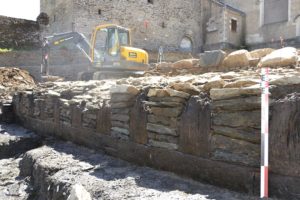
The following content has been translated and adapted from the original work by lefildeculture in In the Estuary 25/07/2014.
Saint-Lupien in Rezé is one of the most important archaeological sites in this region. Recognized on a European scale, it is has been the object of programmed excavations and every year from June to July groups of 50 or so people have worked on exhumation of the Gallo-Roman remains. To explain the discoveries and the history of the city, a heritage interpretation and animation center (CIAP), or simply the Chronographe, has been constructed.
Rezé is a commune and former bishopric in the Loire-Atlantique department in the Pays de la Loire region of western France (Britanny or Bretagne prior to 1789). It was named Ratiatum by the Roman settlers in the 1st and 2nd centuries AD, Ratiate in the Middle Ages and Rezay in the High Middle Ages. Inhabitants of Rezé are called Rezéens.
Archaeological excavations of Saint-Lupien
The first Gallo-Roman ruins in Saint-Lupien were excavated in the 19th century but it was especially during the construction of a subdivision in the 1980s that the City became aware of the size of the site and acquired the ground to protect it. In 2004, an archaeological service is created. Since then, planned excavations have been coordinated by the Inrap (National Institute of Archaeological Research), the City of Rezé and the University of Nantes and the Chronographe is the result of these studies, a presentation of the site which provides a viewing platform to better survey the remains and visualise the original site.
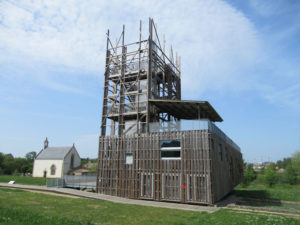
The history : the ancient city of Ratiatum
During the Roman conquest, independent tribes shared the Gallic territory. North of the Loire, the Namnetes founded the city of Condevicnum, future city of Nantes. In 56 BC, the Venetians, a people of the Armorican region, resisted. In order to defeat them, Caesar allied with Pictons, whose capital is Limonum (Poitiers), which provides him with wood, soldiers and ships. The Venetes are then defeated. It is possible that in the form of a reward, the Pictons could expand their territory to the Loire. They then founded Ratiatum, the future town of Rezé, which stretches for two kilometers along the banks and 500 meters deep inland. It does not seem like much today, but it was an important agglomeration. It was cited by geographers of the time, Strabo and Ptolemy.
The remains of the ancient quay
The strategic position of Ratiatum made it the ideal place to establish a port to promote trade, especially with the Namnètes, neighbors of the north of the Loire. Ceramics, now preserved in the departmental museum Thomas Dobré (closed for renovation), testify to exchanges with provinces sometimes very far away, for example the Palestinian region. In 2011, remains of monumental docks were discovered. This is an exceptional case in France, which indicates the wealth of the ancient city of Ratiatum.
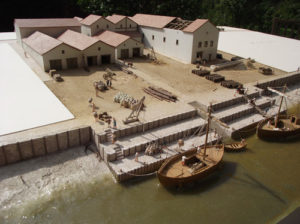
Digital reconstruction of the facilities of the Gallo-Roman port
These terraced wharves advanced into the river, connected by bank walls. Composed of oak beams and micaschist fragments, their state of preservation is exceptional. On the front, a series of posts at regular intervals are fixed by mortise and tenon on a sandpit (a large horizontal beam). These woods have inscriptions: Roman numerals that served as benchmarks for the assembly. Dating from dendrochronology, using growth rings of trees, it is established that these poles come from oaks felled in the winter of 88-89 AD.
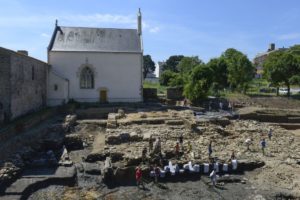
The monumental docks in front of the Saint-Lupien Chapel
In the photograph, the beams are covered with a geotextile veil to keep them in a damp environment and away from light. Near the docks were warehouses, workshops and shops, following a typical checkered pattern of Roman cities. At the end of the second century AD, the port began to decline. Scientists do not have the explanation yet. Several hypotheses are formulated, including that of a silting of the Loire at this location, making the port of Ratiatum obsolete. Today, the banks of the Loire are 500 meters from the site.
The archeological millefeuille of Saint-Lupien Chapel
The chapel Saint-Lupien is an archeological millefeuille because it contains vestiges of all eras. Two large Gallo-Roman walls intersect at right angles. They lined the street that overlooked the wharf.

Gallo-Roman remains located under the chapel
In the Middle Ages, the site becomes a center of pilgrimage around the tomb of one of the first Christians of Rezé: Saint Lupien. Until the twelfth century, a necropolis with different types of burials occupies the site. Sarcophagi are used for the foundations of the first chapel, built in the 9th century.
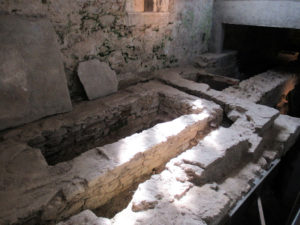
Sarcophagi and bones in the foundations of the first chapel
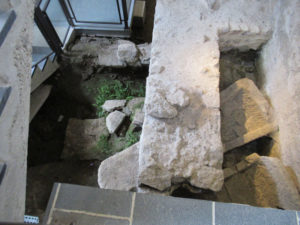
Sarcophagus with carved head
In the fourteenth century, a new chapel that corresponded to the current plan was erected. Until the eighteenth century, it belonged to the priory of Geneston Abbey. Sold at the Revolution, the chapel Saint-Lupien became a place of storage of hay, adjoining a farm. In the nineteenth century, the owner of the farm discovered bones that he believed belong to Saint Lupien himself and built a vault. At the same time, the walls were raised and a new frame installed.
The archaeological site of Saint-Lupien continues to unveil new secrets. Villas, workshops, thermal baths, a small temple, a main street with porticoes, warehouses and monumental docks make up the ancient port district of Ratiatum, on the site of the current Saint-Lupien area. In the Middle Ages, the use of some buildings for the necropolis allowed a conservation of the foundations which gives much information on the Gallo-Roman life but also on the evolution of the site. Today, the City of Rezé wishes to highlight this heritage and make the Saint-Lupien site a cultural and tourist center at the local and national levels.
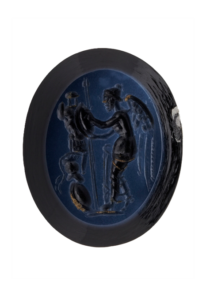
Click Refresh to view slides
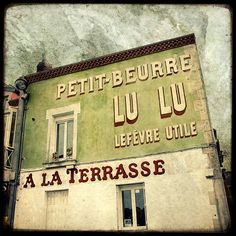
Translated from https://www.ouest-france.fr/pays-de-la-loire/nantes-44000/redecouvrir-le-village-de-trentemoult-reze-5166297 retrieved 25/04/2018
In Rezé, the small village of Trentemoult denoted by its architecture and atmosphere, contrasts with the rest of the city of Nantes.
A peaceful neighborhood where time seems to slip more slowly. ” Located on the south bank of the Loire, Trentemoult was once an island separated from the land, to the south, by an arm of the river, the Seil. It was filled, like other islands of Rezé, in the middle of the twentieth century, “says Florian Riffet, heritage mediator, the mayor of Rezé.
The patrimony
Trentemoult is divided into two parts. On one side, we find the small fishermen’s houses which constituted the bulk of the village until the middle of the 19th century.
“ The alleys are tortuous and winding, but this disposition is not anarchic. The houses were tightened to protect themselves from the wind, many having their backs turned to the Loire. Some also have the characteristic of communicating granaries, thus facilitating the circulation in case of flood. At that time, very few houses were colorful. “
On the other side, from the second half of the nineteenth century, houses of captains and cap-horniers appeared as a result of the growth of maritime trade in Nantes. ” The houses of the Cape Horners are larger, more bourgeois, and situated in more distant and straight streets. The roof of these dwellings is in slate, while the fishermens’ houses are covered with tiles. “
Recent history
After the Second World War, the village experienced a difficult period. The decline of the Nantes shipyards was a blow as many Trentemousins worked on these sites.
“ The population was aging and the primary school faced closure but the construction of the marina in 1979 helped to revitalize the village“said Riffet.
The film La Reine Blanche (with Catherine Deneuve, Richard Bohringer and Jean Carmet) in Trentemoult, in the summer of 1990, also took part in the village’s new fame. Vestige of this shoot, the mosaic storefront of the modern comfort store is always visible.
A tourist district
Strollers are not mistaken: walking around Trentemoult is a very enjoyable activity. On weekends and in summer, the village’s bean shops are always busy, and many tourists come to visit its narrow streets. ” The connection by Navibus from the Nantes ferry terminal created in 2005 makes it easier for visitors to get around Trentemoult. The recent coloring of the houses over the last fifteen years has also given a new charm to the village. “
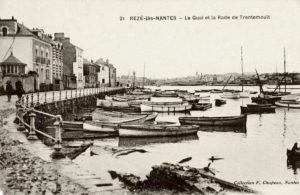
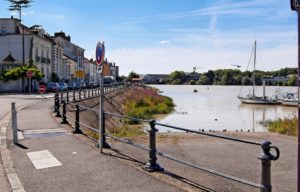
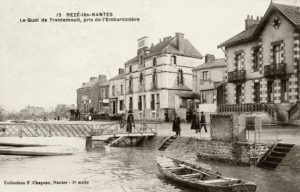
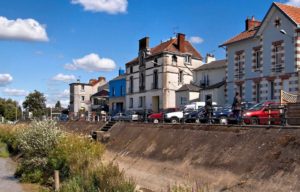
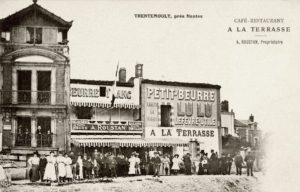
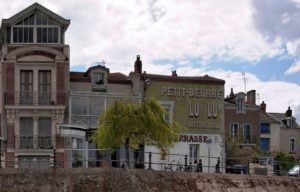
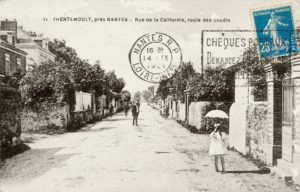
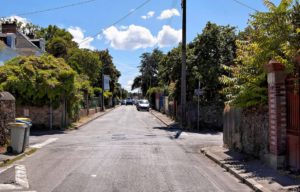
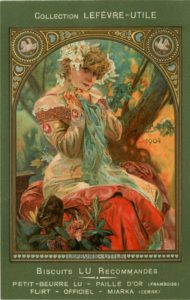
Click Refresh to view slides
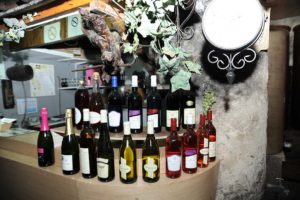
Martine & Laurent BUROT
E.A.R.L. du Petit Logis
L’Aujardière 44430 LA REMAUDIÈRE
Muscadet and Gros-Plant are the most famous wines of the vineyards of Nantes.
Cabernet, Gamay, Merlot, Pinot Noir, Grolleau, Grolleau Gris and Malvoisie are also produced here. Red or rosé, they have the qualities specific to this terroir of the Armorican Massif and this climate of oceanic sweetness.
The vicissitudes of history have led us too often to turn our backs on the sea.
Our wines are marine, the Muscadet is the flagship and we want to reconnect with our traditions that make our wines a bridge that connects us to the peoples and cultures of the world.
Vignerons-Artisans de Bretagne invites you to discover or rediscover the wines of this country near Nantes.
Visit the website for details
Click Refresh to view slides
Moss still thrives from the moisture on stones and trees from the night cold.
CLICK Refresh FOR SLIDES
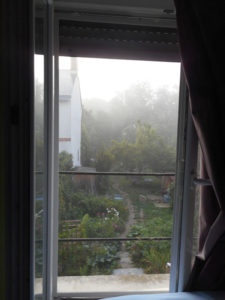
This rear garden sees a few visitors. Beatrix Potter would like it here.
Many residential gardens in France are hidden behind austere facades and this is particularly true in Paris apparently.
CLICK Refresh FOR SLIDES
This week we experienced the “Moscow” winter, a cold front coming from Russia bringing the temperature down to -10 overnight for a week. It’s not cold enough on the north ice cap. In Paris, public transport was brought to a halt but the days weren’t all grey here near the Atlantique coast. Gloves, hat and coat and camera and one of the best walks ever. A full display of new winter flowering plants was a surprise. A small but lovely consolation.
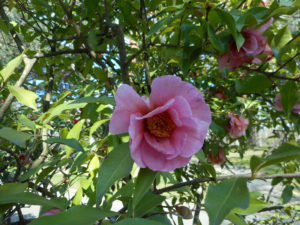
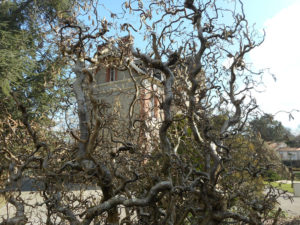
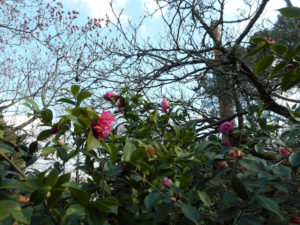
CLICK Refresh FOR SLIDES
CLICK Refresh FOR SLIDES
Grand old gardens seem to assert the outer borders of Nantes in each direction but it is to the North that is located a roseraie for all seasons with ample flowering year round, old roses in their delicate majesty in the warmer months aside hardy new roses which still flower in the cold months.
Roseraie roses and perfume …
Rosa gallica ‘Officinalis’ or Rose de Provins
Using its flowers, as raw material, the apothecaries of Provins specialized, in the sixteenth century, in the preparation of powder, water, perfume, oil, jam. This commerce flourished to the extent that around the year 1600 the main street of this city was only open to apothecaries.
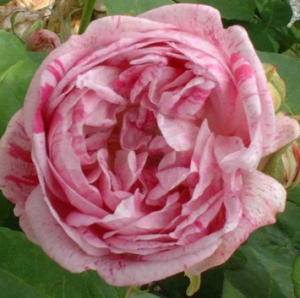
Rosa damascena ‘Trigintipetala’ or Rose of Kasanlik
Bulgaria has cultivated this rose for several centuries for perfumery. Other countries (Turkey, Morocco, India, China) also exploit this flower for its fragrance.
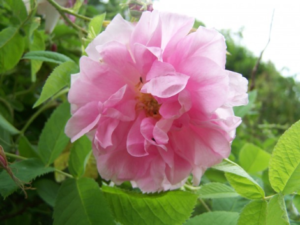
Rosa x centifolia or Rose hundred leaves (Rose with a hundred petals)
Cultivated in France in the Alpes Maritimes, this rose provides the most esteemed fragrance. The French production in 1990 amounting to nearly 320 tons of flowers.
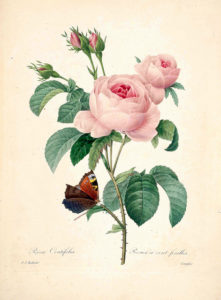
The perfumes
Roses exhale fragrances of varying quality and intensity that sometimes influence the soil and climate. If Kasanlik’s rose and the rose of the painters smell pink, Golden Sun has a spicy smell. Other roses release bouquets of scents: apple and clove (Souvenir de la Malmaison), iris and violet (Maréchal Niel), rose and parsley (Mrs John Laing), anise (Paul Ricard).
Award of Garden Excellence
During the inauguration of the 10th Biennial of Fragrant Rose, on June 18, 2010, Mr. Maurice Jay, President of the French Rose Society, presents to the public the plaque of the Award of Garden Excellence, awarded by the World Federation of Societies de Roses in 2009, designating the International Rose Garden of Nantes as one of the 4 most beautiful in France (after the Haÿe les Roses in 1995, the Golden Head in 2006 and Bagatelle in 2007) and among the 35 remarkable rose gardens in the world.
To discover in the rose garden …
The alveoli
To accentuate the privileged contact with the roses, the designer drew paths symbolizing a branch of rose with its ramifications, its thorns and its flowers.
This route allows two complementary approaches:
– by taking the gravel circulations, the visitor perceives all the massifs with their modeling and their colors,
– using paved alleys, he enters the world of roses. The enthusiast has the leisure to seize the beauty, to capture the perfume, to know the name of each of them and to photograph his favorites.
The Ellipse of the medalists
Within this ellipse exposed to the South and sheltered from the wind are gathered the roses that constitute the ‘Top 50’ of the new varieties.
The belvedere
From this high point of the Roseraie, the view extends to the city center and, it is easy to appreciate the privileged site that occupies the park on the banks of the Erdre. This beautiful river, punctuated with castles, ranked ‘great national site’, promotes river tourism and water activities.
The Alley of Fragrances
This showcases rosebushes from the Nantaise Rose fragrance, whether award-winning or not, but always remarkable for their scent.
The Clos des Roses Parfumées
This forms an elliptical arena where the sweetest scents are confronted. Le Clos has been specially designed for the International Rose Perfume Contest using the model of this former artisanal quarry sheltered from the East winds.
The architecture takes up the theme of the Rose Garden.
The materials are of the same nature:
– Pontchâteau stone for the pavement of the Rose Garden (work done by the gardeners of the SEVE) which covers an area of about 4,000 m2
– Pont Aven stone for the walls
– ironwork
– wood.
The Fan
The geometric design, inspired by an arabesque, consists of three varieties of roses. By their arrangement in ‘rainbow’, they create a variation of colors from yellow to dark red.
The Alley of ‘Old Glories’
Here are grouped the most deserving old roses, called for the occasion ‘the Old Glories’. Many of them offer a unique and generous bloom in May-June. The roses producing a second bloom at the end of summer (so-called ‘rising roses’) did not enter the gardens until the end of the 19th century.
CLICK Refresh FOR SLIDES